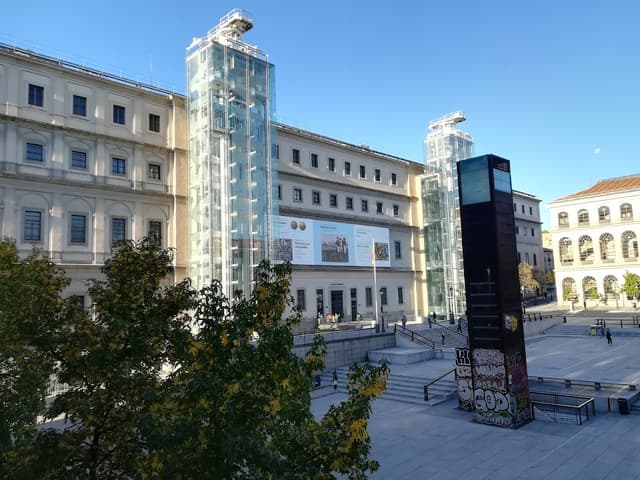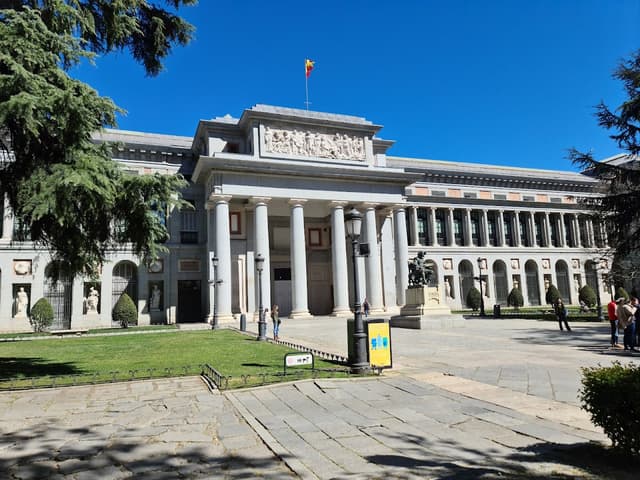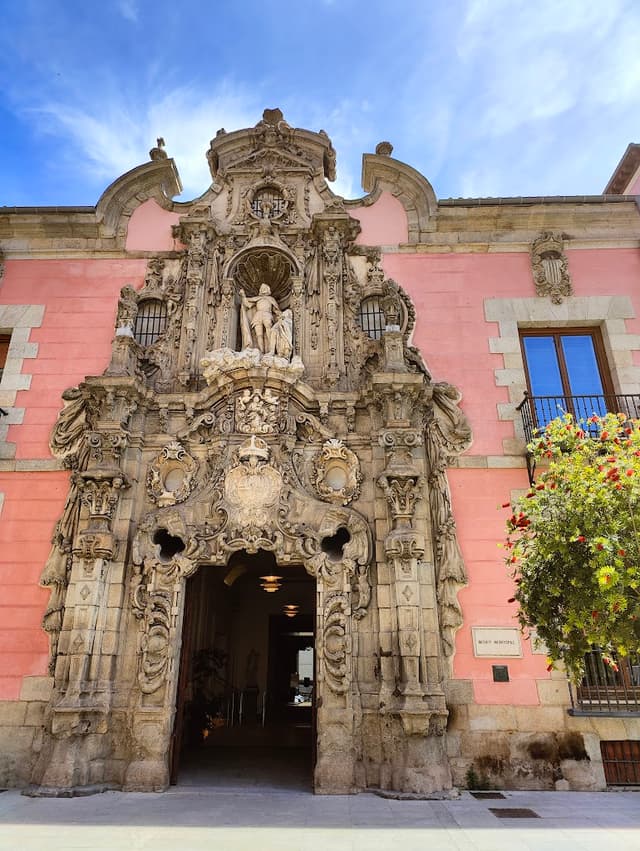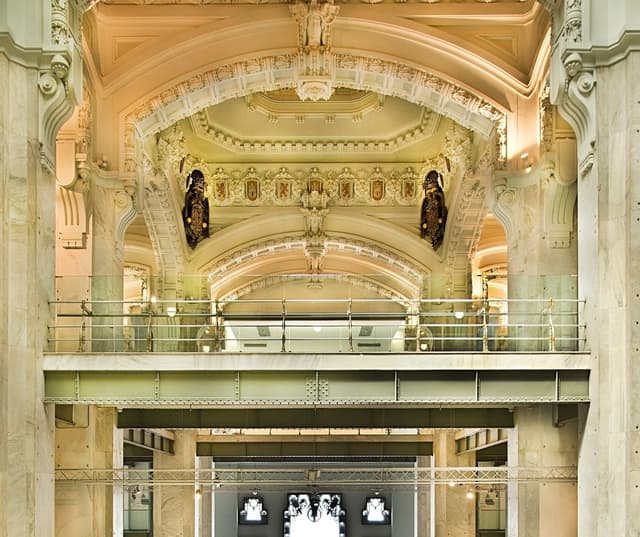BEST MUSEUMS IN MADRID

THE GOLDEN TRIANGLE OF ART
Let’s start with the most famous ones. The Paseo del Prado is also known as the Golden Triangle of Art because the three most important museums of the city are located on this avenue, creating a sort of a triangle, looking at it from a map:
Museo Nacional Centro de Arte Reina Sofia
This museum is housed in a former hospital and holds art pieces from some of the most famous Spanish contemporary artists: Pablo Picasso, Salvador Dalí and Joan Miró, amongst others. This museum is worth visiting just to contemplate Guernica (Pablo Picasso, 1937), an astonishing 8m long work of art picturing the devastation of this town, located in the north of Spain, in Euskadi, after the bombing that took place during the Spanish Civil War (1936-1939). Other unmissable pices are Young Woman at a Window (Salvador Dalí, 1925) and Escargot, femme, fleur, étoile (Joan Miró, 1934). Reina Sofia Museums has two more sites in El Retiro Park, Velázquez Palace and the Crystal Palace. They house temporary exhibitions that are completely free. In addition, the Crystal Palace and its exhibitions offer an extraordinary opportunity to take astonishing pictures.

Museo Nacional del Prado
The National Museum el Prado opened in 1819 and houses art pieces from Spanish, Italian and Flemish artists from the 15th-18th century. Some of the most relevant artists include Velázquez, el Greco, Goya, Rubens and Hieronymus Bosch. A few unmissable pieces are Las Meninas (Velázquez, 1656), Third of May, 1808 (Goya, 1814) and, a personal favourite, The Garden of Earthly Delights (Hieronymus Bosch, 1500-1501).

Museo Nacional Thyssen-Bornemisza
This art gallery showcases the private collection of Baron Thyssen-Bornemisza de Kászon. It houses works from English, Dutch and German artists from the 15th-18th century as well as expressionists, impressionists and 20th-century paintings. Some unmissable art pieces are View of Vessenots, Auvers (Vincent van Gogh, 1890), Portrait of Henry VIII (Hans Holbein, 1534–1536) and Self-portrait Wearing a Hat and Two Chains (Rembrandt, 1642-1643).

Tip: if you want to visit these three museums, there is a 16,50 euro combined ticket that allows you to visit the three places within a year. Also, look out for discounts, as these museums are free for students and other collectives.
SOME LESSER-KNOWN MUSEUMS
Museo de Historia de Madrid
The museum is housed in a former hospice built in 1673 and showcases the history of Madrid since it became the capital of Spain from 1561 until the 20th century. Through several rooms across three floors, the visitor can see paintings, furniture, porcelain pieces, maps and other objects that explain the history of the city from becoming the capital to the social changes in the 20th century. I think it is worth visiting this museum to learn more about the city, and due to its location in the city centre (Fuencarral Street), it is a perfect break from shopping and walking around the streets.

CentroCentro
Many people don’t know that it is possible to visit the City Hall. The Cibeles Palace is one of the most emblematic buildings of the city and houses the city council and a cultural centre. Free temporary exhibitions are displayed on the 5 levels of this building, and there is usually one paying exhibition. For a small fee, it is also possible to access a terrace with an amazing view of Madrid’s skyline. This place is worth visiting just to contemplate the beautiful building from the inside.

National Archaeological Museum
This museum features a wide range of objects from the different cultures that have populated the Iberian Peninsula and the Mediterranean. Two of its most relevant pieces are Lady of Elche (limestone bust) and the Votive crown of the Visigoth King Recceswinth from the Treasure of Guarrazar.

Museo Sorolla
The home and studio of the Spanish painter Joaquín Sorolla store the largest collection of his paintings. This museum is worth visiting to see Sorolla’s paintings, the beautiful small garden and the decoration of the house, which has been kept intact since the painter lived there.

Museo Cerralbo
Less than 5 minutes from España Square, there is a 19th-century house formerly owned by the Marquis of Cerralbo. The museum opened in 1944 and houses part of the Marquis’ private collection, which features Spanish and Italian paintings, a numismatics collection, Oriental art pieces, tapestries and 18th-century clocks, amongst many others. Furthermore, the building still retains most of its original baroque aesthetics. The dancing room is astonishing.

Tip: if you want to visit Museo Cerralbo and Museo Sorolla, there is a 5 museum pass that includes these two and the Decorative Arts Museum, the Lázaro Galdiano Museum and the Romanticism Museum. The uniqueness of these museums is that they are located in former mansions and feature collections with paintings, porcelain pieces and other objects from their former owners. The pass can be purchased in any of the museums, its price is 12 euros, and you have 10 days to visit the museums.
The home for unique & authentic travel